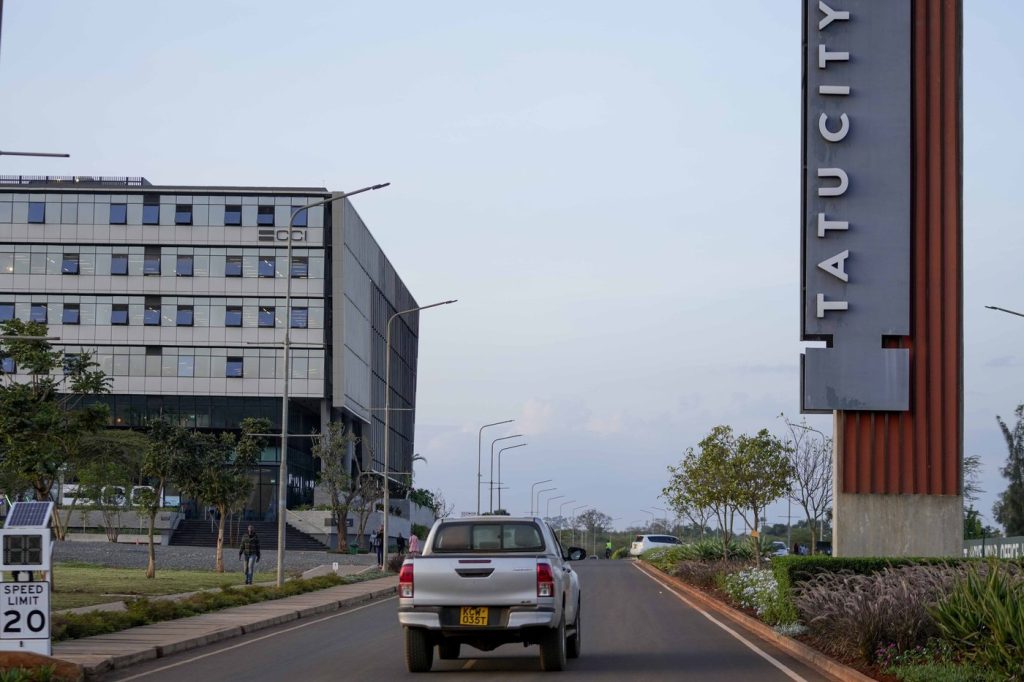KIAMBU, Kenya – Tatu City, located on the outskirts of Kenya's capital, Nairobi, offers visitors a strikingly different experience compared to the rest of the region. Once entering Tatu City, even the most reckless drivers adhere to traffic laws, thanks to rigorous enforcement of rules regarding speeding and littering. This commitment to law and order has made the city an attractive destination for its 5,000 residents, as noted by Valerie Akoko, a digital content creator who has lived there for two years, stating, "I’ve never seen Tatu City dirty."
Spanning 5,000 acres, Tatu City aims to become a fully developed urban center, eventually home to a population of 250,000. It currently hosts 88 businesses that employ around 15,000 people, including notable firms like CCI Global, which operates a 5,000-seat call center, and Zhende Medical, a Chinese manufacturer of medical supplies. While similar projects can be found worldwide, Tatu City stands out in sub-Saharan Africa, where urban developments seek to tackle unique challenges of urbanization that have plagued the continent.
The continental urban landscape presents a paradox; even though cities typically contribute to economic growth, increased productivity, and reduced poverty elsewhere, sub-Saharan Africa has largely experienced stagnant economic transformation despite rapid urbanization. Projections from the United Nations indicate that Africa's urban population is expected to grow by 900 million by 2050, surpassing the current urban populations of Europe and North America combined. However, this growth occurs within a framework of persistent poverty.
Kurtis Lockhart, director of the Africa Urban Lab, emphasized the fiscal constraints on towns and cities across Africa, noting their inadequate tax bases to support the necessary urban infrastructure for their rapid population influx. Political tensions and weak property rights amplify these challenges, affecting developments like Tatu City. The city has encountered local political hurdles, including a long-standing dispute involving its multinational owner, Rendeavour, and a former governor of the central bank, which delayed progress for years.
Despite these obstacles, proponents of new city developments, such as the Charter Cities Institute, posit that properly designed cities like Tatu can stimulate growth, create jobs, and reduce poverty. However, the complexities of such projects, coupled with Africa's history of failed developments, demand careful planning and execution. Angola’s Quilamba City, constructed since 2002 with a population exceeding 130,000, stands as one of the few success stories in the continent's quest for urban development.
Meanwhile, Tatu City presents a model with 26,400 individuals presently living, working, or studying there. Experts highlight the necessity of private sector involvement in urbanization efforts, given that many African nations lack the fiscal capacity to invest adequately in infrastructure. Rendeavour, with its deep financial resources, exemplifies how private entities can contribute meaningfully to these efforts. However, potential inequalities arise, such as the case of Eko Atlantic in Lagos, where property prices are accessible only to the elite.
Anacláudia Rossbach, executive director of UN-Habitat, pointed out that while startup cities can mitigate stress on existing urban centers, they must prioritize inclusivity and affordability to avoid creating secluded enclaves for the wealthy. In Tatu City, one-bedroom apartments are priced at $45,500, which, though still beyond the reach of many Kenyans, is attainable for some in the emerging middle class, given Kenya’s per capita GDP of $1,961 in 2023.
Working collaboratively with the Kenyan government, Tatu City has been designated as a special economic zone, allowing businesses within its confines to benefit from tax incentives and other advantages. The transparent governance and reliable services, such as independent water and energy supplies, draw both companies and residents alike. Tatu City operates under national law but is authorized to establish rules on traffic management and construction parameters, all under Tatu's management oversight.
Tatu City’s infrastructure, utilities, and security have earned acclaim from residents like Sylvester Njuguna, a restaurant owner, who praised the environment as one of the best. Its strategic placement, just 12 miles (19 kilometers) north of Nairobi, allows it to tap into the city’s labor market effectively. Lockhart noted that successful new city initiatives are typically close to major urban areas, boast high-quality anchor tenants, and respond to market demand.
By adopting a gradual, market-driven approach rather than developing grand plans from the outset, Tatu City exemplifies a forward-thinking model for urbanization in Africa. Rendeavour’s methodology—building according to the community’s needs rather than imposing untested infrastructures—could be key to achieving sustainable urban growth across the continent.










